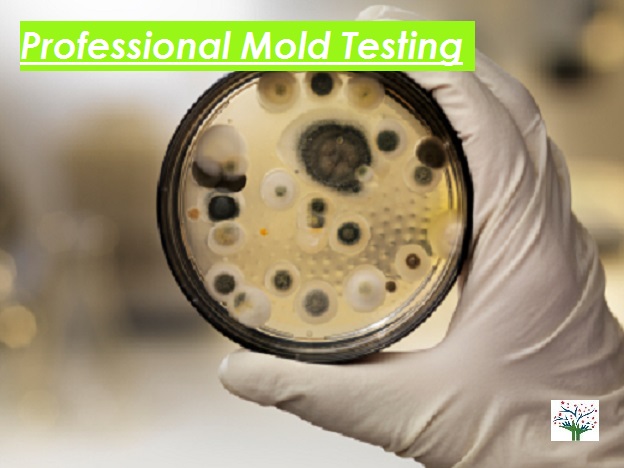Exactly How Mycotoxin Testing Assists Prevent Contamination and Safeguard Food Supplies

Mycotoxin screening is a crucial technique in the food industry, serving as a frontline protection versus contamination by damaging contaminants produced by mold and mildews. Via the application of sophisticated methods like High-Performance Fluid Chromatography (HPLC) and Fluid Chromatography-Mass Spectrometry (LC-MS), food producers can precisely identify and quantify mycotoxin degrees in agricultural products.
Comprehending Mycotoxins
Understanding mycotoxins begins with recognizing that they are poisonous second metabolites produced by specific mold and mildews, which can pollute farming items. These metabolites are not crucial for the development or recreation of the fungis yet can have extreme effects for animal and human wellness. Mycotoxins are generally located in staple plants such as corn, wheat, barley, and nuts, where they can multiply under certain problems of wetness and temperature.
There are several kinds of mycotoxins, each created by different fungal varieties. Fusarium types generate fumonisins and trichothecenes, both of which are connected with various intense and chronic health concerns.

Threats of Mycotoxin Contamination
The threats of mycotoxin contamination are diverse, positioning significant dangers to both food safety and public wellness. Mycotoxins, hazardous compounds created by certain kinds of fungi, can infect a broad array of agricultural items including grains, nuts, spices, dried out fruits, and coffee.
Economic effects are another significant issue. Infected crops can cause substantial monetary losses for farmers and food producers because of lowered yields and the requirement for costly purification measures. International trade can be dramatically hindered as countries apply strict mycotoxin guidelines to protect their populations, leading to turned down deliveries and strained trade connections.
Ecological variables such as climate change worsen the risk of mycotoxin contamination. Variations in temperature and humidity can produce desirable problems for fungal development, increasing the possibility of contamination events. Therefore, understanding and minimizing these risks are important for making certain the safety and honesty of global food supplies.
Methods of Mycotoxin Testing
Accurately identifying mycotoxin contamination in farming products is vital for securing public health and wellness and keeping food safety and security requirements. Different techniques are utilized to discover and measure mycotoxins, each offering specific advantages and restrictions.
High-Performance Fluid Chromatography (HPLC) is an extensively made use of approach because of its high sensitivity and precision. It involves dividing mycotoxins from various other compounds in an example, enabling exact metrology. Likewise, Liquid Chromatography-Mass Spectrometry (LC-MS) combines fluid chromatography with mass spectrometry to supply comprehensive molecular information, making it specifically beneficial for identifying multiple mycotoxins concurrently - Mycotoxin testing Services.

Gas Chromatography-Mass Spectrometry (GC-MS) and Thin-Layer Chromatography (TENDER LOVING CARE) are additionally used, each with one-of-a-kind applications. GC-MS is effective for volatile mycotoxins, while tender loving care supplies a less complex, cost-efficient choice for initial testing.
Advantages of Routine Checking
Routine testing for mycotoxins in agricultural items supplies countless advantages, substantially adding to public health and food safety and security. By recognizing contamination early, routine testing helps prevent the circulation of hazardous foods, thus decreasing the risk of mycotoxin-related ailments amongst consumers. This proactive strategy not only safeguards human wellness yet additionally boosts the overall quality of food materials.
Regular screening likewise sustains regulative compliance. Various countries and areas have actually established rigorous limitations for mycotoxin levels in food and feed. Following these limitations through normal testing ensures that distributors and manufacturers meet lawful standards, thus avoiding charges and trade barriers. Keeping conformity promotes customer trust and brand name reputation, which are important for market success.
Additionally, routine mycotoxin screening can bring about significant economic Bonuses benefits. Early detection of contamination enables prompt intervention, reducing potential losses from extensive contamination. Applying normal screening protocols can also reduce recall expenses and associated responsibilities, which can be monetarily ruining.
Furthermore, regular testing offers important data that can notify much better agricultural methods and storage conditions. By comprehending patterns of contamination, producers can adopt safety nets, thereby reducing future risks and adding to the sustainability of the food supply chain.
Carrying Out Checking Procedures
Carrying out efficient mycotoxin testing methods is critical for ensuring the safety and security and high quality of agricultural products. Establishing a durable screening structure involves numerous crucial steps, starting with the recognition of possible contamination points within the production and supply chain. This consists of pre-harvest, post-harvest, storage space, and distribution stages. Each stage should be scrutinized to determine where mycotoxin contamination is more than likely to occur.
Once critical control factors are identified, picking proper testing techniques is important. Usual methods consist of enzyme-linked immunosorbent assay (ELISA), high-performance liquid chromatography (HPLC), and mass spectrometry (MS) Each approach has its strengths and weak points; thus, picking the correct one relies on the specific mycotoxin being examined, the required level of sensitivity, and available resources.

Last but not least, integrating informative post the testing methods into a thorough food safety monitoring system is a good idea. This enhances traceability and makes it possible for quick corrective activities when contamination is spotted, therefore securing the integrity of the food supply chain.
Verdict
Mycotoxin screening is crucial in avoiding contamination and securing food products by making it possible for early detection of damaging toxins produced by molds in agricultural products. Routine screening boosts brand name online reputation, financial stability, and count on in food security by lessening contamination-related losses and keeping high criteria in food manufacturing.
Mycotoxin screening is an indispensable practice in the food industry, serving as a frontline Get the facts defense versus contamination by harmful toxins produced by mold and mildews. An incorporated strategy entailing farming techniques, storage space administration, and routine testing can reduce the risks associated with mycotoxin contamination, ensuring food safety and public wellness.
The threats of mycotoxin contamination are diverse, presenting considerable risks to both food safety and public wellness.Normal testing for mycotoxins in farming items provides numerous advantages, dramatically adding to public health and food safety.Mycotoxin screening is vital in avoiding contamination and safeguarding food products by allowing early discovery of dangerous contaminants created by molds in agricultural products.